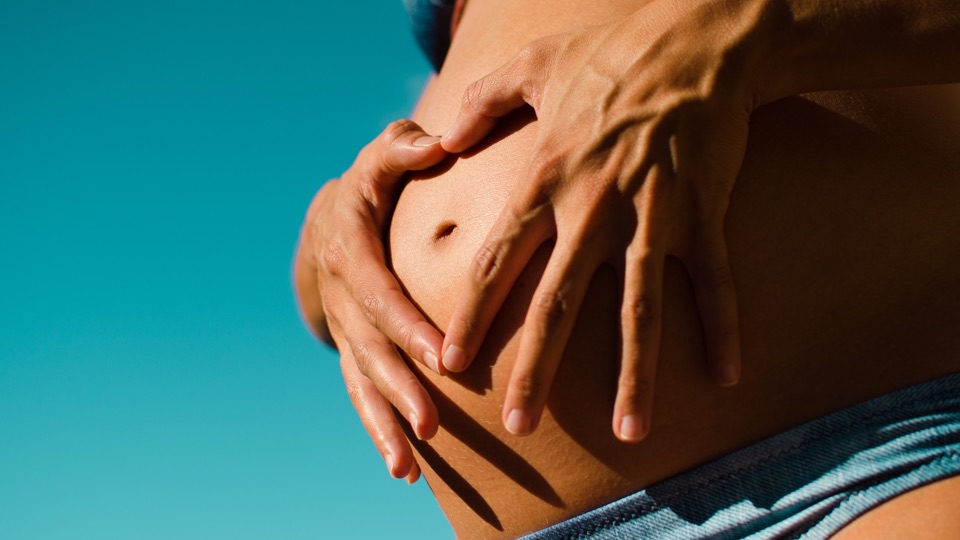Exercising during your pregnancy is safe and healthy, so long as you've consulted your GP beforehand. You can do most types of exercise in pregnancy, including running, Pilates, weights, yoga and swimming.
If you exercised before you became pregnant, you can continue to exercise now, though you may need to make a few tweaks to your usual routine. The aim should be to keep your current level of fitness rather than trying to reach peak fitness.
Aerobic exercise
Aerobic exercise is any activity that makes your heart beat faster. This includes brisk walking, swimming and various classes that you do to music.
If you’re new to aerobic exercise, start off slowly and gradually build up to a maximum of four half-hour sessions a week.
Cycling
Cycling is a great low-impact aerobic exercise. However, as your bump grows, your balance will change, which could mean you are more likely to fall off.
If you’re used to cycling, you should be safe to carry on, but if you begin to feel less stable than usual it may be best to stay off your bike or switch to a stationary bike until after your baby is born.
Using a stationary exercise bike in the gym or as part of a group session is fine.
Pilates
The aim of Pilates is to improve balance, strength, flexibility and posture. It could help your body cope with carrying the extra weight of your growing baby, as well as preparing you for childbirth and recovering afterwards.
Running
If you were a runner or jogger before you got pregnant, it’s safe and healthy to continue during your pregnancy as long as you feel okay. Your baby will not be harmed by the impact or the movement. Running is a great aerobic workout.
Strength exercises
Strength training exercises are exercises that make your muscles stronger. They include swimming, working with weights, walking uphill and digging the garden.
It’s a good way to keep your muscles toned during pregnancy.
Swimming
Exercising in water supports your bump and won’t strain your back. It’s a great way to get your heart rate up without putting extra stress on your joints and ligaments.
Aquanatal classes are popular and can be a fun way to meet other mums-to-be.
Be aware
You may need to avoid breast stroke because it can cause back pain if your spine is not aligned correctly. It can also be uncomfortable for women with symphysis pubis dysfunction (SPD)/pelvic girdle pain (PGP).
Walking
Walking is a great basis for pregnancy fitness and you can do it for the whole nine months if you feel comfortable.
Walking is free and it’s available on your doorstep. If you’re not used to exercising, walking is a great place to start.
Yoga
Yoga is an activity that focuses on mental and physical wellbeing. It uses a series of body positions (called postures) and breathing exercises. Pregnancy yoga uses relaxation and breathing techniques with postures that are adapted for pregnancy.
What are pelvic floor exercises?
Pregnancy and birth weaken your pelvic floor muscles. These muscles are located in your pelvis and go from your pubic bone at the front to the base of your spine at the back. They are shaped like a hammock and protect your bowels, womb and bladder.
Your pelvic floor muscles support these organs when you jump, sneeze or cough, lift heavy things, and push your baby out in the second stage of labour.
When you’re pregnant you should make sure you exercise the muscles of your pelvic floor. By keeping them strong you can help decrease the risk of becoming incontinent (when wee leaks out accidentally).
You can exercise them at any time of day, wherever you are, without anybody knowing you’re doing the exercises.
It’s not always easy to find a suitable session or instructor while you are pregnant, so here are some tips on how to find one:
Ask your midwife, GP or the receptionist at your surgery or antenatal clinic.
Contact your local Village Health Club and speak to one of our highly qualified Personal Trainers
If you join a general class rather than a pregnancy-specific class, ask the instructor if they are able to advise you on any exercises that you shouldn’t do or ways to adapt exercises for you. If they aren’t able to do this, you should look for a different session.
There are a few things to be aware of:
- Be careful if you are doing exercises where you could lose your balance, such as cycling, horse riding or skiing.
- Avoid contact sports where there is a risk of being hit, such as kickboxing, football, judo or squash (though if you’re in a team you can still continue to do any non-contact training).
- Don’t exercise at high altitudes without acclimatising.
- Don’t exercise for more than 45 minutes at a time.
- If you have any unusual symptoms, stop exercising and contact your doctor or midwife immediately.
- Don’t let yourself get too hot – drink lots of water, don’t over-exercise (see below) and don’t exercise in a very hot, humid climate without giving your body a few days to get used to it.
- Don’t do exercises in which you lie flat on your back after 16 weeks.
If you take care with these points you can safely continue to stay fit through your pregnancy and beyond.
If you did not exercise before getting pregnant, it is safe and healthy to start now. Start with 15 minutes of exercise 3 times a week and increase it gradually to 30-minute sessions 4 days a week or every day.
Exercise doesn’t have to mean planned sessions – there are some ideas here for everyday activity that can help boost your health and that of your baby.
Don’t overdo it
Avoid pushing yourself too hard as this can make you overheat, which is not good for your baby. You should aim to work hard enough so that you breathe more deeply and your heart beats faster, but not so hard that you can’t pass the talk test. You should be able to hold a conversation without gasping for breath.
If you’re doing an exercise class or working out in the gym, tell Personal Trainer you’re pregnant and ask their advice about checking your heart rate.
Heart rate to aim for when doing aerobic exercise in pregnancy
Your age Heart rate (beats/minute)
Less than 20 years 140-155
20-29 years 135-150
30-39 years 130-145
Over 40 years 125-140




